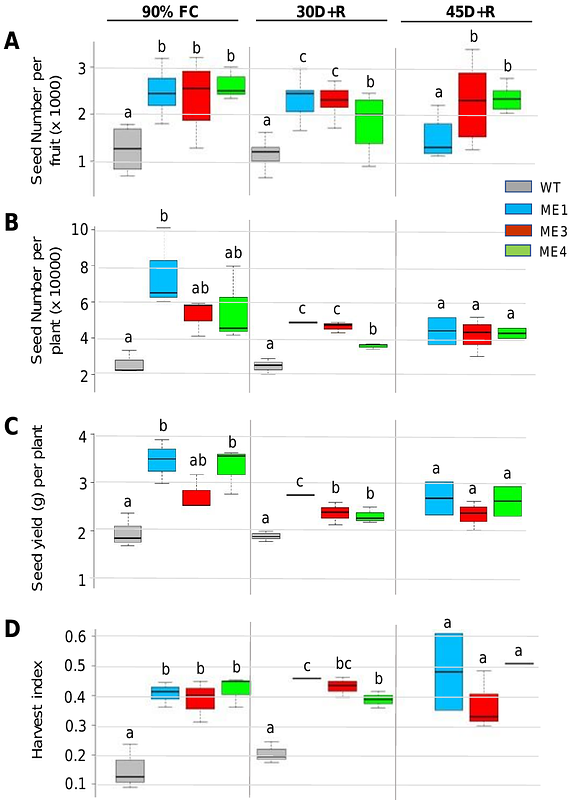Drought resistance and improved yield result from modified malate metabolism in guard and vascular companion cells

Drought resistance and improved yield result from modified malate metabolism in guard and vascular companion cells
Oitaven, P.; Guindon, M. F.; Muller, G. L.; Margarit, E.; Saper, C.; Srebot, M. S.; Fu, Y.; Verma, K.; Wewer, V.; Metzger, S.; Lara, M. V.; Estavillo, G. M.; Maurino, V. G.; Drincovich, M. F.
AbstractDrought is a major threat to food security. Water loss through stomata is an inevitable consequence of CO2 uptake, and water deficit inhibits plant growth, making it challenging to develop drought-resistant strategies without compromising yield. Here, we generated tobacco plants expressing a maize NADP-dependent malate decarboxylating enzyme in stomata and vascular cells (ME plants), which show higher seed yield and faster maturation compared to wild-type (WT) plants under normal irrigation and after drought. While WT plants die after 45 days of drought, ME plants survive without any adverse effects on seed production. In addition, ME plants exhibit improved photosynthetic efficiency despite reduced stomatal conductance and changes in stem morphology, which are likely related to their ability to withstand drought. We propose that enhanced C4-like biochemistry in cells surrounding the vascular system and increased sugar export likely compensated for the reduced stomatal conductance in ME plants. The study demonstrates that cell-targeted metabolic modifications can avoid pleiotropic effects and facilitate the stacking of beneficial traits to improve crop design.


